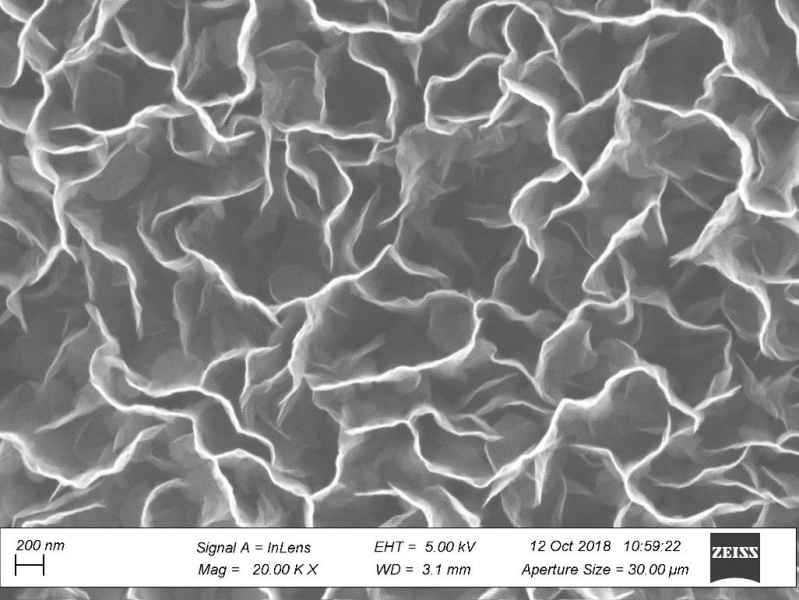Hydrogen as the ultimate clean energy source has attracted significant research interest in recent years. Water splitting is a key technology to utilize electricity for producing hydrogen. However, one big challenge in water splitting is that noble metals, such as platinum (Pt), are often needed as the catalyst. The high cost and scarcity of noble metals have so far limited the applicability and scalability of water splitting.
This project will explore a new concept of using single-atom catalysis with vertical graphene as a low-cost alternative to noble metal catalysts. Single-atom catalysis offers advantages such as high catalytic activity, stability, selectivity and 100% atom utilization. However, it remains elusive to find a support material to provide stable and enhanced catalytic performance. Vertical graphene, where graphene layers aligned vertically to the surface, is highly attractive for supporting single-atom catalysis since: i) the large surface area and open channels can ensure easy accessibility for catalysts; ii) the high electrical conductivity can boost the electron transport between electrode and catalyst; and iii) the superhydrophobicity can help remove the bubbles and reduce the dead area. It is thus anticipated that the efficiency of water splitting can be greatly improved by combining vertical graphene with single-atom catalysis.
The project will also include collaborative opportunities with CSIRO and Chinese Academy of Science (CAS). The host of this project, Particles and Catalysis Research Group (PARTCAT), is a leading catalysis research group within the School of Chemical Engineering at the University of New South Wales (UNSW).
Supervisors: Scientia Prof. Rose Amal and Dr Zhaojun Han
For more information contact: r.amal@unsw.edu.au and zhaojun.han@unsw.edu.au
